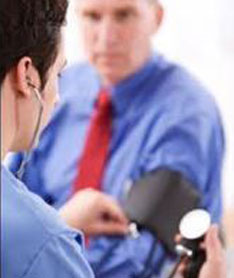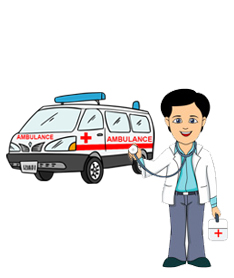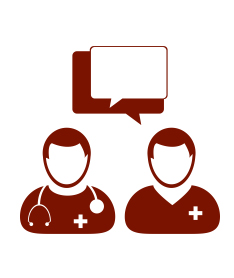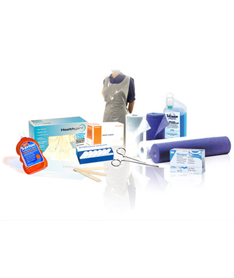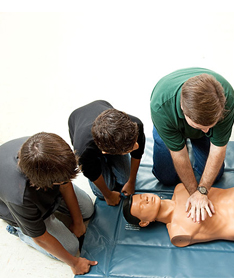Be Nice To Your Skin!
What is skin?
The skin is the largest organ of the body, with a total area of about 20 square feet. The skin protects us from
microbes and the elements, helps regulate body temperature, and permits the sensations of touch, heat, and
cold. Skin is the layer of usually soft, flexible outer tissue covering the body of a vertebrate animal, with
three main functions: protection, regulation, and sensation.
Structure of the Skin
The epidermis is the outermost layer of the three layers of skin. Its thickness depends on where it is located
on the body. For example, it's thinnest on the eyelids. It's thickest on the palms of the hands and soles of the
feet.
Function of Skin
One of the most important functions of the skin is protection. It prevents harmful pathogens and toxic
substances from entering the body. Unless there is a cut on the skin, nothing can penetrate the skin as this
layer assures the protection of different inner parts as well.
Types of Skin Treatment
Like the heart, stomach, and brain, your skin is an organ. In fact, it’s the largest organ in your body, but
it’s still easy to take skin for granted. Unless there’s a problem, you may not think about your skin very
much. But skin has an important job to do.
Your skin is constantly protecting you. Your skin keeps infections out of your body and keeps you from
getting sick. When you take care of your skin, you’re helping your skin do its job. And taking care of your
skin today will help prevent future problems, like wrinkles and even skin cancer. Good skin care also has
tremendous social and mental benefits. By looking good it makes a great first impression on others in an
interview, a date, or even just making new friends. The mental benefits may even be greater – it keeps you
feeling good about yourself. Nothing gives you more self-confidence and an extra bounce in your step more
than knowing you look good. Proper skin care, being that skin is the most noticeable part of a person’s body
is the #1 way to get that feeling.
There are many different types of skin problems – cosmetic and health and many types of solutions. We will
focus on skin problems/treatments for cosmetic purposes. Some of the more common issues are
acne
scars, age spots, wrinkles, and sagging skin. Some of the more common
skin treatments are: laser
treatments for laser rejuvenation and laser resurfacing, microdermabrasion, botox (botulinum
toxins), dermal fillers, chemical peels among others.
Microdermabrasion
Microdermabrasion works to remove age spots and lighter
acne scars. The procedure is one of the favorite
wrinkle treatments because it is performed quickly in a facial esthetics office. The physician uses a handheld
instrument to spray small crystals onto the surface of the skin. The crystals exfoliate the skin layers, while
using suction simultaneously to remove the crystals and dead skin cells. More than one microdermabrasion
treatment may be needed for wrinkle removal and other
skin treatments it provides.
Chemical Peels
Chemical peels, also called chemexfoliation or derma-peeling treatments, are cosmetic treatments performed
on the face, typically used as an anti-aging solution to rejuvenate the skin. Chemical peels are used to correct
skin irregularities in texture, such as fine lines, and color, such as spots caused by sun damage. These peels
have varying strengths, characterized by the different kinds of acids used in the applied chemical solution.
Chemical-peel solutions use three main acid ingredients to reach varying levels of intensity: alphahydroxy
acid (AHA), trichloroacetic acid (TCA), and phenol.
Laser Resurfacing
Laser skin resurfacing removes the outer layers of the skin that are damaged. The laser
resurfacing procedure stimulates the production of collagen and new skin cells in the underlying layers of
the skin. Laser resurfacing is now used to eliminate or reduce wrinkles and fine lines on the face and neck.
Laser Skin Rejuvenation
Laser skin treatment is an advanced wrinkle removal treatment that uses infrared light to tighten the skin
without surgery. The laser light delivers heat to layers beneath the skin’s surface, stimulating collagen
production and making the skin look tighter. Many patients consider the procedure a good alternative to the
traditional face lift, as it requires no anesthesia, no scalpel, and no downtime.
Acne Blue Light Therapy
Acne blue light therapy works by targeting the bacteria that causes acne. Moderate acne that has not
responded to other facial skin care treatments can be treated with this light-based therapy, which is
administered over a span of several weeks. Acne blue light therapy rarely causes side effects, and does not
damage skin.Intense Pulsed Light a
facial rejuvenation treatment that can be used to address the effects of
sun damage, heredity, and aging on facial skin. Skin imperfections such as wrinkles, uneven pigmentation,
freckles, rosacea, facial veins, brown spots, and enlarged pores can be eliminated or greatly improved
withIPL Photofacial treatments. There is no “downtime” after the procedure — you can return immediately
to your normal daily activities after your IPL Photofacial treatment.
Thermage
Thermage is a non-exfoliating
facial rejuvenation technique designed to tighten and improve the contours
of the face and neck. These aesthetic improvements are achieved with a radio frequency device that is
passed over face, with the tip in contact with the skin’s surface. Controlled radio waves from the device heat
the deeper layers of the skin, stimulating new collagen development. The result is tighter and often smoother
skin. Unlike
laser treatments, Thermage can treat all skin types and requires no downtime. The benefits of
the procedure are often immediately apparent and long-lasting.







